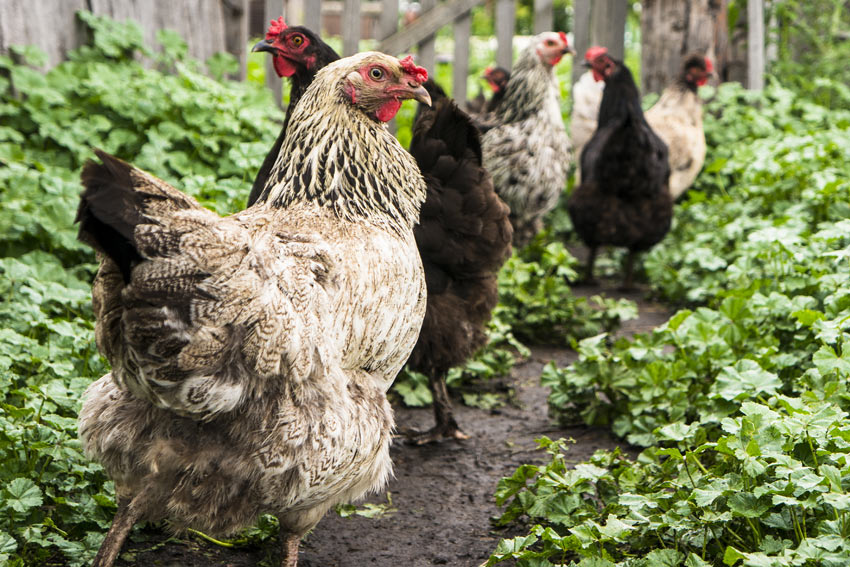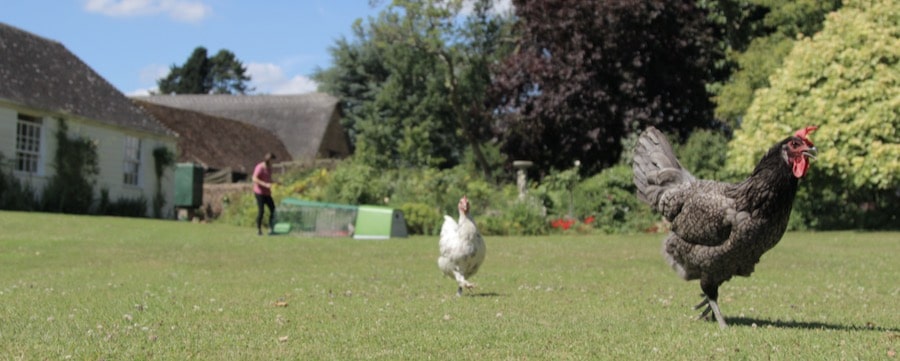Feather Pecking – Why It Happens and How to Avoid It
Chickens have a well-defined hierarchy. Every hen knows who’s boss. This, indeed, is where the phrase ‘pecking order’ comes from.
In everyday chicken life, the occasional peck and minor tussle is perfectly normal. But when the pecking gets out of hand, you will soon have semi-plucked chickens looking thoroughly miserable on their perches.
Bullying will always break out when new birds are introduced to a flock. This is all part of sorting out the new pecking order, everything will be calm and back to normal in a few days, usually.
Hens may peck themselves, too, with the same result – feather loss. However, you’ll be pleased to hear that in both cases – self-plucking and plucking others – the problem can be addressed and solved quite easily.
Overcrowding in the Chicken Shed
Whenever there is insufficient space, hens will begin pecking each other. The only time they’re content with cramped conditions is when they’re settling down side by side for a cosy night’s sleep. Overcrowding causes stress, and stress leads to violence. It begins with the pecking and general bullying of any chicken that sits lower down in the henhouse pecking order.
Providing more space is always the answer here. The minimum space required per chicken depends on the size of the breed; but it is always best to give the birds as much room as possible. As a general rule of thumb, you will need 2 to 3 square feet (0.18 to 0.28 square metres) per chicken in the coop, and 8 to 10 square feet (0.74 to 0.93 square metres) per chicken in a run. This is the bare minimum, though. If you own an Eglu Go Chicken Coop that accommodates up to four hens, six is clearly too many. Two, however, is absolutely fine.
An overheated chicken shed may also cause pecking and plucking, as the high temperatures make the birds’ skin itchy and uncomfortable. Too much light has the same effect; although this is a problem that only really afflicts birds kept in artificial light to boost egg production.
When Chickens See Red
A hen may become the victim of pecking if she is unwell. Sometimes the other chickens will turn on an ailing companion. She will usually find a quiet spot to hide, and you will be able to intervene before things get out of hand.
If a wound is involved, however, the other hens will literally see red. Blood acts as a magnet for the birds, and they will pursue and peck at the wound, plucking surrounding feathers and making the injury worse, with obvious dire consequences. Deaths are not uncommon in these circumstances, and if the wound is combined with overcrowded conditions, cannibalism can occur.
The injured chicken must be isolated from the rest of flock until her wound is healed and she’s in top shape again. If you have a Walk in run for your chickens, partitions is a great solution that will prevent the other chickens from bullying the injured hen.
You can assist the healing process by applying anti-peck and healing lotions and creams.

The Chicken and the Vampires
In 99% of cases, a hen who pecks and plucks herself has parasites. The culprits are usually mites, tiny vampires who leave the chicken’s skin scabby and itchy. Lice and fleas have the same effect. An infested hen will not only look untidy and threadbare, she will also have a drooping comb and will be listless.
One type of parasite, the depluming mite, eats away at the roots of the feathers, causing them to fall out without any intervention from the hen. All these chicken-nibbling nasties can be deterred using spray-on or rub-on medicines.
If your chickens’ diet is low in protein (which will never be the case if their food revolves around good chicken feed pellets), they will look for it elsewhere. Insects and other invertebrates are good sources of protein; but so, too, are feathers. If feather pecking afflicts your flock, diet is another thing to add to the checklist when getting to the bottom of the problem.
When Pluck Runs Out
If your hens lay brown eggs, evidence suggests that you may have more problems with pecking and plucking than someone whose birds lay white eggs. This sounds bizarre, and the science is not conclusive, but observational studies have come to this conclusion. It is, however, largely a problem among chickens kept in large numbers for commercial purposes, and not a consideration the average backyard hen owner should worry about it. It’s certainly intriguing, though…
In most cases of pecking and plucking, you will be able to solve the problem by simple intervention. Give the hens enough space, and keep the chicken-sucking creepy crawlies at bay, and in most cases the problem is solved.
This entry was posted in Chickens
